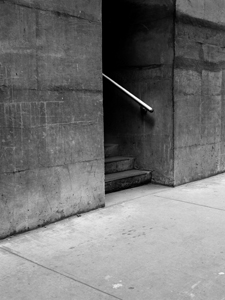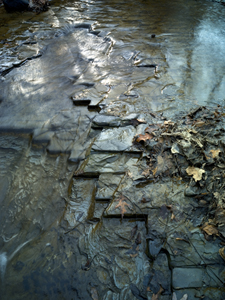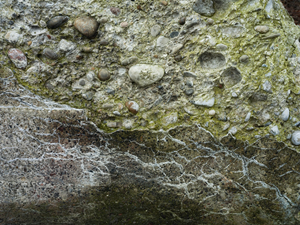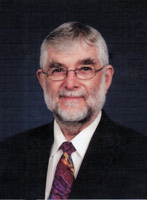
Gallery Photographers
Partner
Artists-in-Residence
Image City Feature Articles
Gary's Photographic Tips
Newsletter Archive
If you are unable to visit our gallery and would like to purchase photographs from this preview or others in the gallery, please contact the gallery and call 585-271-2540.
Peter Marr's Picks of the Show
Sequences
by David Moog
May 16 - June 10, 2012
Peter Marr has picked his favorite photos from the show by the guest photographers
and also describes the strength of the images he has chosen.
click here to return to the details of the exhibit
All images copyright by the individual photographers
Searching for Signs of Life, David Moog Ansel Adams eloquently stated that “The sheer beauty of the medium of photography is tuned to the exact meaning and feeling of the visualized image.” Minor White was an ardent pioneer of sequencing, in which the subject matter were pointers to the significance the meaning appears in the space between the images, in the mood they raise in the beholder. Ultimately, he conceptualized that the subject itself should become a camera, and generates its own photograph. David Moog, a past student of Minor White, has incorporated juxtapositioning and sequencing in this excellent exhibition of truly superb Black and White images, creatively seen, taken and printed. I have chosen the above two prints from a series of eight sequences, because for me, they have the most intimate relationship in the search for signs of life. In the garage scene, one is overwhelmed with despair because of the tremendous awareness of loss of a once prosperous and thriving business, not just fallen on hard times, but deserted, to the extent that time and atmospheric conditions have eaten away at the very fabric of the automobile shop and its contents. There remains no life saving redeeming features that are apparent, as we witness classic cars decaying and lifeless in a rueful mortuary. Ghosts left to rust and crumble, ultimate dust and grime collectors, desperately awaiting a noble benefactor to return them to their true glory and importance before it is too late. The question of why there was such a dramatic abandonment is paramount in the viewer’s mind, and one can only conjecture as to why this business failed. The strong shaft of light, probably from the open entranceway, magnifies the tragedy of the silent occupants. How they must dread the approach of nightfall, and the ensuing darkness which intensifies their loneliness and misery. They cannot search for signs of life, but one always hopes that life and activity will eventually find them. In the Parking Ramp, the mystery that we experienced in the other print is till present, but the feelings of sadness and despair are not there. There is still no sign of life, but intuitively, we know that the stairway is being used, as evidenced by the gleaming, burnished handrail, dramatically framed between the imposing concrete monoliths that support the ramp. There is a starkness and coldness in this inanimate parking structure, positioned here solely for building foundation and egress to the upper floors, in direct contrast to the warmth and passionate feelings one gets with the plight of the abandoned garage. Life does exist and is ongoing with the ramp because it serves a definite need, whereas in the garage there is only aspiration and longing. With these two images, I envision that in the near future, there will be both workers and customers ascending the ramp to experience a viable garage business, restored to its former glory, and most importantly, raising the level of seeing to the heights of Vision. Rocks Affected by Water David Moog Sequencing allows single images to reinforce one another within a contextual concept. The pictures are all that the eye sees, but their subject is the experience of “what else they might be”, or as Minor White would state it, “Things for what they are, and for what else they are.” In themselves, these two impressive color prints are striking images, but together, in juxtaposition, they combine to give an intimate insight into the sheer power and majesty of nature, as through countless years, the relentless conflict of water and rock gives us two very unique landscapes, experienced here in two very different lighting scenarios. In the Creek Detail, the low glancing light casts a glorious shimmering glow to the water and upper rock terraces, whilst it has sufficient strength to illuminate the lower ledges, revealing lovely horizontal and vertical segments, as the relentless stream exposes the rocks in a series of plate-like structures. The exquisite light also reveals patterns of autumnal fallen leaves, together with magical shadows of possibly an overhanging tree, whose slender trunk directs our attention beautifully to the lower rock formations. The color palette is outstanding, the darker lower values in the bottom-half of the print contrasting resplendently with the more delicate hues at the top. Certainly, it is the stellar light permeating through from the background that reveals all the textures, forms, colors and intricate details of this inspirational streamscape. In the Concrete Wall the light is diffuse and non-directional, yet there is just as much detail and intricate pattern structures unveiled as in the other print, revealing an image of comparable beauty and authoritativeness. Here, the water erosion over a much more limited time period, has resulted in an intriguing vista of more rounded structures, complemented by more delicate tracery elements in the foreground. Small aggregates in the wall creatively make their own visual statements, no doubt very aware of their eventual outcome with the loss of nearby neighbors, being very witnesses to the relentless water that is forever molding and changing the environment. Here, the struggle is nature against a man-made intruder, a concrete edifice built to withstand and hold back the incoming sea. The soft colors are splendid and compelling, and every texture and detail of the stones and wall structures are expressively revealed, including the fascinating tracery in the foreground, where the cracks themselves add a delightful and meaningful patterned structure. OWS 10 Xander Arpag The artist has done an exemplary job of recording multi-faceted images of the Occupy Wall Street Movement, that are a moving and poignant documentation of dedicated people making their presence felt to try and affect change and social reform. Of the many outstanding prints, I chose OWS 10 because it uniquely captures one individual, together with the recorded thoughts and needs of countless others. One is captivated by a lone warrior, distinctly and colorfully attired, stretched comfortably on his makeshift bed, with the prerequisite cup of coffee and lighted cigarette plainly visible. What is so moving and intriguing, is that this person is positioned near the edge of the picture frame, looking intently beyond, whilst surrounded by a vast expanse of various messages, which are printed or scrawled on every conceivable type of board or paper. He is obviously in a lively conversation with a person or persons unknown, but what is remarkable, is that there appears to be hope and certainly forthrightness in the man’s face, that speaks highly of the individual dedication and motivation that he has. He has a story to relate, and he is proud of the accomplishments of both himself, and of the vast number of individuals who have enthusiastically contributed to the messages behind him, statements which are heartfelt, meaningful and important to thousands of participants. The panorama of placards, carefully arranged on the concrete surface of Liberty Square, project a delightful mixture of colorful hues, giving the impression of a very large patchwork quilt, where each square contains a definitive message. What is important, is that all this information, supported by peaceful demonstrations, receives a great deal of radio and TV coverage. This absorbing and inspiring image, relates not to just a large array of views and requests from countless people, but to a strong human bond of fellowship of hope for future changes, in both social and governmental reforms. 
Edward Street Garage
Buffalo, 1969
Parking Ramp
Rochester, 1966
Edward Street Garage, Buffalo, 1969
Parking Ramp, Rochester, 1966
Creek Detail
Letchworth, 2009
Concrete Wall
Squaw Island, 2009
Creek Detail, Letchworth, 2009
Concrete Wall, Squaw Island, 2009 
Peter MarrWe are very grateful to Peter for his thorough review and selection for Peter's Picks. Peter was born in England in 1935 and came to live in the United States in 1968. He worked for the Eastman Kodak Company for 34 years, retiring in 1998. During his employment and continuing into retirement, he has been an enthusiastic photographer. His photography has won him numerous awards throughout Kodak and in International Salons, including 5 George Eastman Medals, which is the top honor awarded to the most outstanding picture in the Annual Kodak International Salon. He has served as a judge in both local and international photographic competitions for the past 20 years, and is a Past president of the Kodak Camera Club and past chairman of many of the Kodak Camera Club organizations. In the past five years or so, he has devoted his photographic skills and interest into nature photography, notably bird photography. His bird photography has been the subject of several one-person exhibits, the most recent being at Ding Darling NWR, in Sanibel, Florida, The Roger Tory Peterson Institute in Jamestown, New York, and at the Webster Public Library in Webster, NY.
Image City Photography Gallery ♦ 722 University Avenue ♦ Rochester, NY 14607 ♦ 585.271.2540
In the heart of ARTWalk in the Neighborhood of the Arts